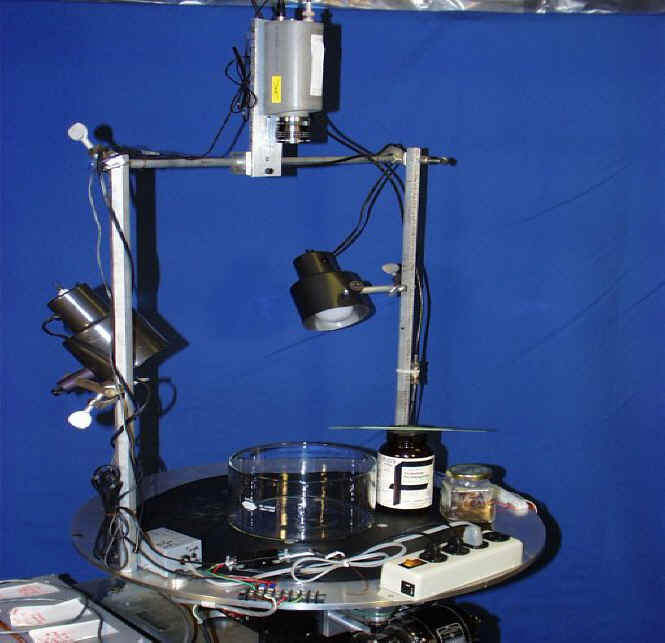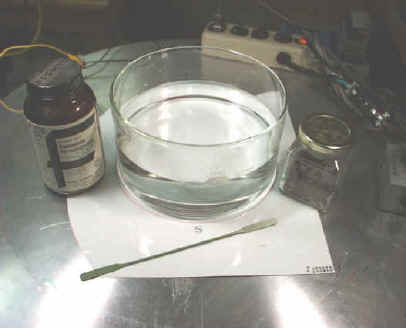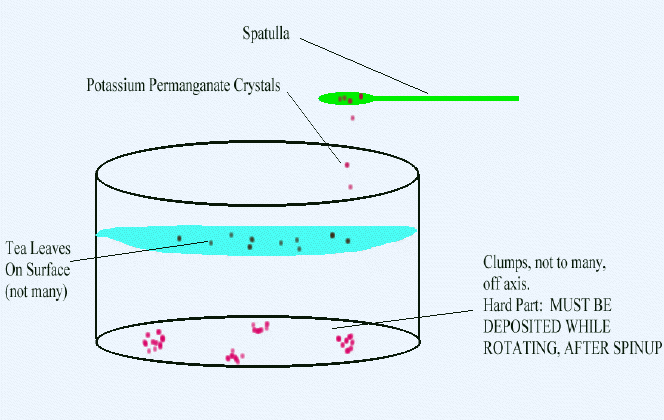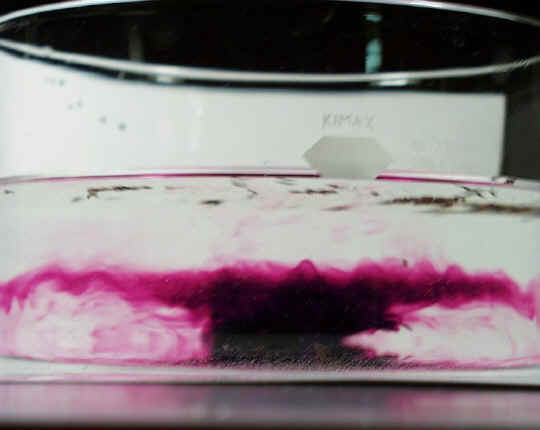
BOUNDARY LAYER CONVERGENCE AND DIVERGENCE
Demonstrate convergence in the Ekman layer under a cyclone, divergence in the Ekman layer under an anticyclone.
The setup uses the Rotating Table Facility. Place a cylindrical dish on the axis and fill about half way with water.
Start the table up to a moderate rotation rate (e.g. 4 second period).


Closeup of the gear needed for this experiments. Potassium permanganate crystals, beaker, tealeaves and spatula. SET UP ON A WHITE SHEET in order to obtain proper lighting of dye on the bottom and tea leaves on the top.

Before rotation or after spinup, sprinkle a few tealeaves on the surface
After spin up to solid rotation, carefully drop to permangante crystals into small piles at mid radius. this is a little tricky. You have to do it while the system is rotating. Your mistakes may lead to a few laughs.
Change the rotation rate by about 10% (not critical). Increase the rotation (turn up speed control) => an anticyclonic relative motion in the cylinder. Decrease the rotation (turn down the speed control on the rotating table => cyclonic relative motion).
Observe inviscid response by watching the tea leaves on the free surface.
Observe the viscous boundary layer response by tracking the dye motion at the bottom.
QT MOVIE OF CONVERGENCE UNDER A CYCLONE, FOLLOWED BY DIVERGENCE OUT FROM UNDER AN ANTICYCLONE BIG SCREEN VERSION (MORE MBytes)

Side view image of dye erupting vertically up out of the bottom Ekman boundary layer after the rotation rate of the table has been decreased (cyclonic relative motion in the fluid).
©2000. John Hart, University of Colorado